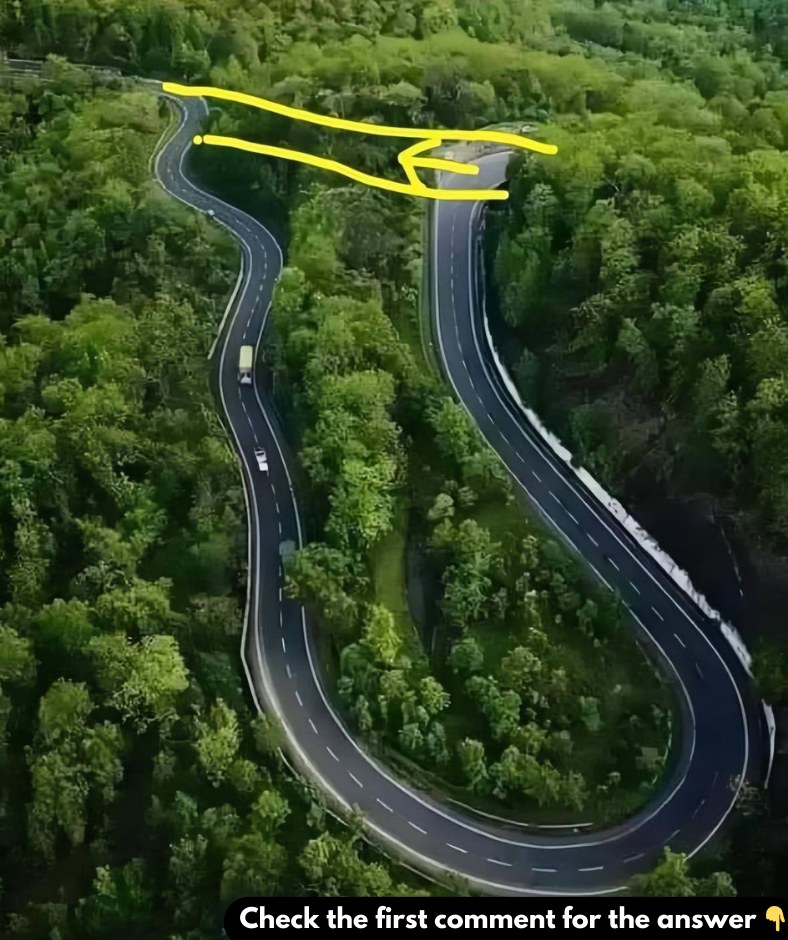When it comes to road design, there’s much more to consider than just getting from point A to point B. While straight, flat roads may seem like the easiest and fastest way to travel, they actually present hidden dangers. Curved roads, with their gentle turns and inclines, are designed to keep drivers engaged and, ultimately, safer on the road.

The Hidden Risks of Straight Roads
Driver Fatigue on Straight Highways
Straight, uninterrupted roads can seem convenient, but they often lead to driver fatigue. Over time, the monotonous nature of a straight road causes a lack of mental engagement. Without the need for frequent adjustments, the brain can go into “autopilot,” causing drivers to lose focus or even fall asleep.
Increased Risk of Accidents Due to Inattention
As attention drifts on straight roads, reaction times slow. If an unexpected obstacle or change in traffic conditions arises, drivers may not respond quickly enough, increasing the likelihood of accidents. Straight roads give a false sense of security, leading to higher speeds and less attention to potential hazards.
How Curved Roads Keep Drivers Engaged
Mental Stimulation Through Turns and Adjustments
Winding roads require drivers to make frequent adjustments to their speed and steering, which keeps their minds active and engaged. Each curve demands a shift in focus, preventing boredom and reducing the risk of inattention. This mental engagement helps maintain sharp reflexes and increases safety.
Reduced Driver Fatigue
Unlike long, straight highways, curved roads keep drivers mentally stimulated and awake. The frequent need to adjust to turns helps fight off the drowsiness and complacency that can develop during long drives on straight routes.
The Science Behind Curved Road Design
Curve Radius and Centrifugal Force
Curved roads are engineered with careful attention to curve radius and centrifugal force. These factors ensure that vehicles can safely navigate turns even at higher speeds. Engineers design roads that encourage safe driving while maintaining a natural flow, providing a balance between excitement and control.
Improved Safety at High Speeds
On straight roads, drivers are more likely to speed, leading to greater risks of accidents. In contrast, the curves on winding roads naturally encourage drivers to reduce their speed, providing better control and decreasing the chance of accidents caused by excessive speeds.
The Challenges of Steep, Straight Roads
Speed Control and Loss of Vehicle Control
Steep, straight roads, especially those with significant inclines, pose a risk for loss of vehicle control. Heavily loaded vehicles, such as trucks, can struggle to slow down or stop, especially when traveling downhill without curves to help reduce momentum.
Limited Visibility and Hazards
Another risk of steep, straight roads is limited visibility. Drivers often can’t see what lies ahead until it’s too late, making it difficult to respond to sudden hazards or changes in traffic conditions. On winding roads, drivers are more cautious and naturally slow down to accommodate the turns and shifts in the road, improving safety.
Why Winding Roads Are the Safer Choice
Keeping Drivers Alert and Focused
Winding roads naturally stimulate driver engagement, keeping them alert to the constant changes in direction and speed. Drivers must stay focused to navigate turns safely, which leads to better attention and quicker reaction times.
Naturally Slower Speeds
Curved roads also encourage drivers to slow down, particularly when approaching tighter turns. This helps reduce the risk of high-speed accidents, which are more likely on straight roads where drivers tend to accelerate without restraint.
Why the Time-Safety Trade-Off is Worth It
Curved Roads May Take Longer—But They’re Safer
While winding roads may add a few minutes to your travel time, the added safety benefits make it well worth the trade-off. The slower speeds, better focus, and increased engagement can prevent accidents that are all too common on long, straight stretches of road.
Balancing Speed with Safety
It’s easy to prioritize getting to your destination as quickly as possible, but safety should come first. Curved roads offer a safer alternative that balances speed and security, ensuring you arrive safely rather than risking dangerous conditions on straight highways.
Engineering Safer Roads: The Role of Curve Radius
Centrifugal Force and Stability
Curves are carefully designed to balance centrifugal force, ensuring that vehicles remain stable even when turning at speed. Engineers use precise calculations to design turns that reduce the risk of skidding or losing control, providing drivers with safer passage through winding roads.
Gradual Inclines for Better Control
Gradual inclines paired with curves are an essential part of road design. On a steep, straight road, drivers often have to brake hard to maintain control. In contrast, the gradual slopes of winding roads allow for smoother navigation, reducing the chances of accidents due to brake failure or loss of control.
Winding Roads Are the Safer Option
In the debate between straight, flat roads and winding, curved ones, the evidence is clear: winding roads offer greater safety. Their design keeps drivers alert, reduces the likelihood of accidents caused by inattention, and naturally encourages slower, safer driving speeds. Though they may take a bit longer to navigate, the enhanced safety they provide makes winding roads the smarter choice for drivers.
So the next time you encounter a winding road, embrace the curves—they’re designed to keep you safe, focused, and fully engaged in the driving experience. In a world where driver safety is paramount, winding roads are the key to a safer, smoother journey.





